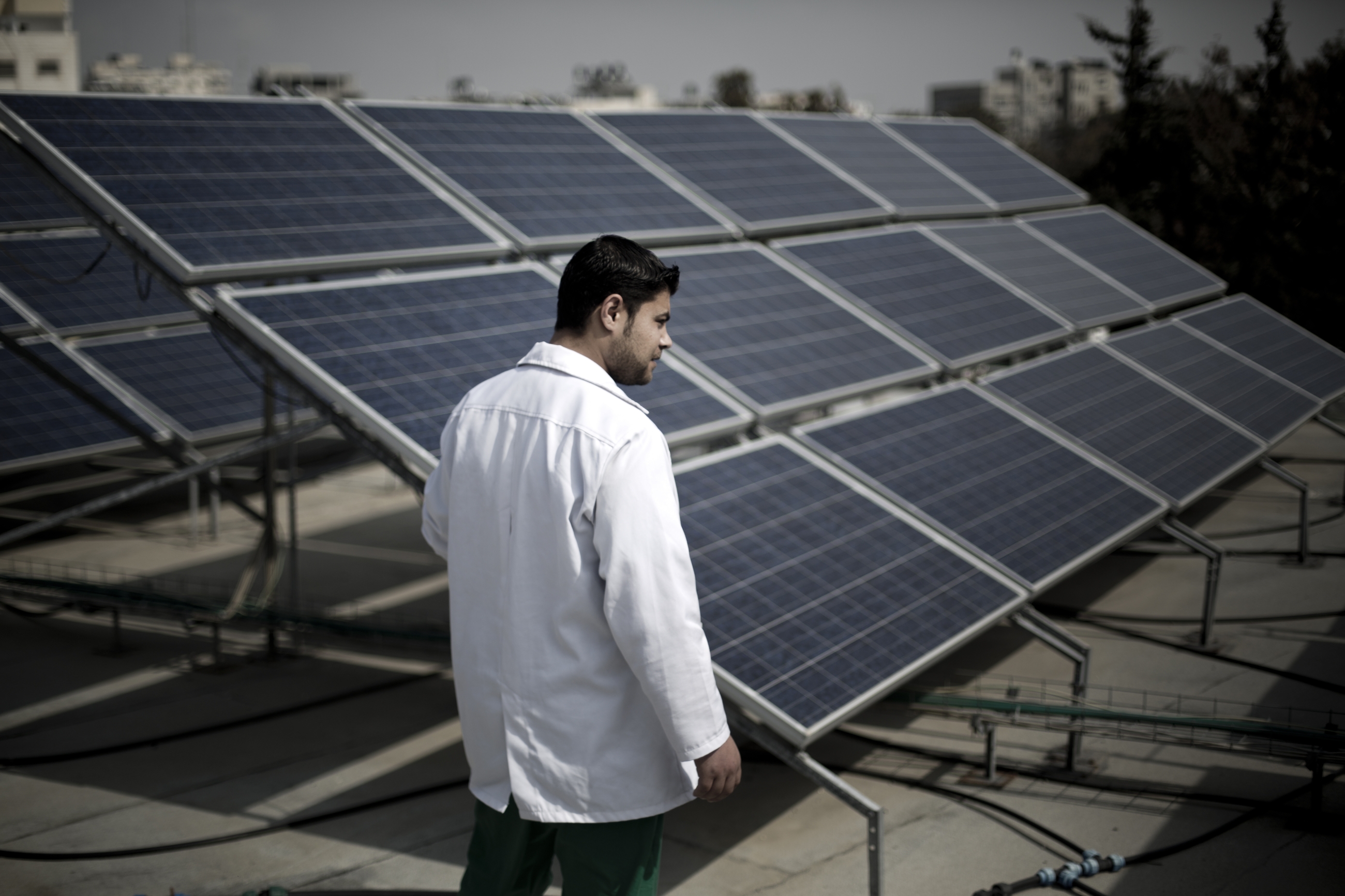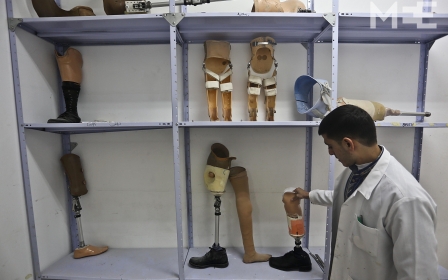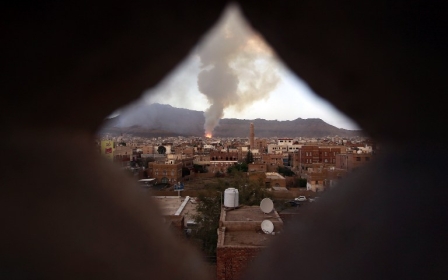Let it shine: Solar solutions for Gaza healthcare

TORONTO, Canada - “One thing that can never be taken away from a people is the sun.”
That is the idea underpinning an international effort to bring uninterrupted electricity to hospitals in the Gaza Strip using solar panels.
After a successful fundraising campaign concluded last year, organisers say the first Gaza health centre – Al Aqsa Hospital in Deir al-Balah – should be running on 24-hour renewable energy by the end of April.
“This is a project of sustainability,” said Ben Thomson, a Canadian doctor who helped launch the project. “The energy is always going to be there. It’s a sustainable source of energy that is directed in a way that saves peoples’ lives… that’s a win for everybody.”
At a cost of $200,000 US per system, solar panels will be installed on Al Aqsa Hospital first, then on Kamal Adwan Hospital in Beit Lahiya and Rantisi Pediatric Hospital in Gaza City. A larger system costing $600,000 will also be set up at the European Hospital in Khan Younis.
An Indiegogo campaign to fund the project for these hospitals raised over $215,000 in donations from more than 1,150 backers last year.
Organisers have partnered with Islamic Relief Canada and the United Nations Development Programme (UNDP), which is coordinating the transportation of the equipment – solar panels, batteries and alternator systems – into Gaza.
“It’s about [whether] you support saving the lives of children? Do you believe that people should have access to electricity in their hospitals? And I think the answer to [that question] is so obvious,” Thomson told Middle East Eye.
Precarious supply puts Palestinians at risk
Israel and Egypt maintain a strict blockade on Gaza, limiting the movement of people and goods in and out of the coastal territory, including construction materials and medical supplies.
An Israeli air strike on the Gaza Power Plant in June 2006 also marked the beginning of an ongoing electricity crisis, according to the United Nations humanitarian office (UN-OCHA).
As of July 2015, only 45 per cent of the territory’s electricity needs were being met, UN-OCHA estimated. Blackouts last up to 16 hours per day across Gaza and heavily populated areas are particularly hard-hit by the cuts.
Palestinians have been forced to rely on fuel to power backup generators, but this too, has proven tenuous due to the steep price of fuel and a fluctuating supply that can be cut off at any time as a result of the political situation.
As a result, medical services and access to medical care have been negatively affected.
“Constant fluctuations in power supply have resulted in the malfunctioning of sensitive medical equipment, including ultrasound, X-ray, laboratory machines, cardiac monitors, sterilising machines and infants’ incubators,” UN-OCHA found.
Doctors may also choose to postpone elective surgeries to prioritise emergency procedures.
“I don’t think there’s a word in the English language that explains how important this is,” Thomson said about the solar panels.
“When you’re in an emergency room and you have the ability to examine a patient, but can’t because you can’t see them, or need to put in a chest tube, but can’t because you can’t see them. That’s an incredibly frustrating experience.”
While the EmpowerGaza initiative seeks to first power the hospitals’ intensive care units, emergency rooms and operating rooms, Thomson said non-essential services would also see improvement.
“It will make all the other areas in the hospital operate much better,” he said.
Budding healthcare innovations
But solar panels are not the only way people in Gaza are seeking to address local healthcare needs.
Mohammed Abu Matar leads a project using 3D printers to manufacture medical equipment, including stethoscopes and artificial limbs for Gaza’s medical patients.
“We live under a blockade as you know, and importing medical tools is not always easy,” Abu Matar told Middle East Eye.
The 29-year-old from Jabaliya refugee camp in northern Gaza said it takes about one hour to manufacture a stethoscope, using one of three 3D printers he has built at a cost of around just $250-300 each.
He said the idea first came to him a year ago in collaboration with Palestinian-Canadian doctor Tarek Loubani, an emergency room physician who is also part of the EmpowerGaza project.
Abu Matar’s team has made 10 stethoscopes so far, at a cost of about $5 each, a fraction of the cost of more traditional stethoscope models. The challenge now, he said, is to get Palestinian doctors and patients on-board.
“So far, they are not very convinced by the idea because it’s something new and not the traditional solution,” he said about doctors’ first reactions to the stethoscopes. Patients, meanwhile, have had a lukewarm response to prosthetics “because it’s something new that they’re not used to, and because it looks like a robot hand”.
But manufacturing prosthetics quickly and at low cost can help the many patients in Gaza, especially children, who lost limbs as a result of previous wars, or after picking up unexploded ordinance that litter the area, Abu Matar said.
“Kids pick [them] up and it explodes in their hands. Many children lost their fingers or hands after the war, so we want to help these kids, not to mention the others who lost their legs or suffered damage to other limbs.”
Investment needed
Said Hassan is the acceleration manager at Gaza Sky Geeks, a business start-up accelerator based in Gaza launched with the help of international NGO Mercy Corps.
“We want to expose Palestinians to international expertise and knowledge in the world [and we’re] trying to build a system in Gaza that helps start-ups,” Hassan told Middle East Eye.
He said while Gaza is home to a highly educated population with strong technical skills, the major challenge has been to secure the funding needed to support their innovative projects.
“The community is welcoming to the idea of start-ups but in terms of the system itself… we don’t have local investors who can invest in start-ups,” he said, adding that NGOs and governments should provide more support to get Gaza-made projects off the ground.
“Young people in Gaza are eager to prove themselves, to create something new, to change the reality they are living in,” he said. “The first thing is the desire to change."
This article is available in French on Middle East Eye French edition.
New MEE newsletter: Jerusalem Dispatch
Sign up to get the latest insights and analysis on Israel-Palestine, alongside Turkey Unpacked and other MEE newsletters
Middle East Eye delivers independent and unrivalled coverage and analysis of the Middle East, North Africa and beyond. To learn more about republishing this content and the associated fees, please fill out this form. More about MEE can be found here.







